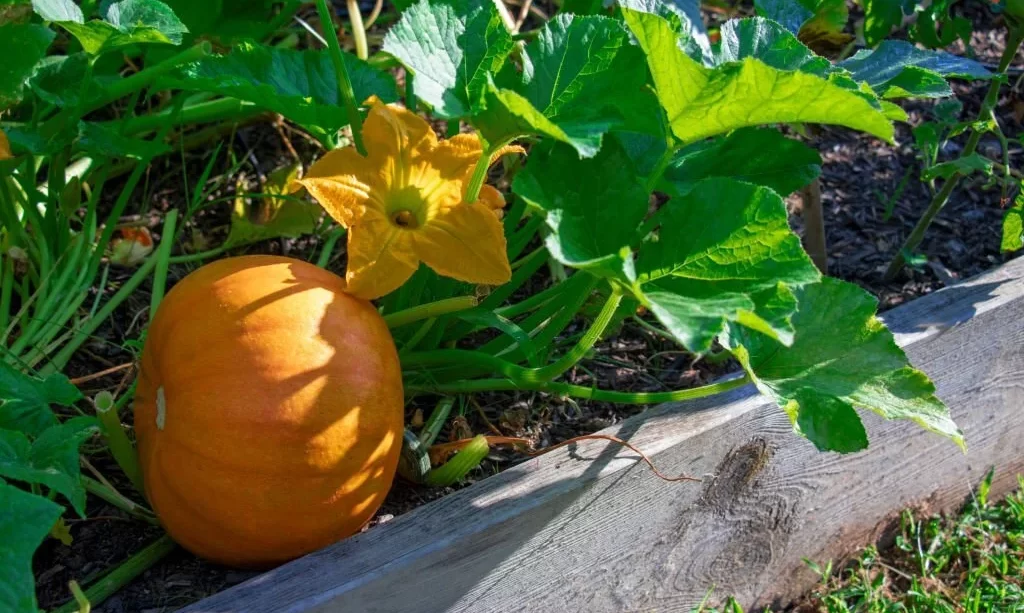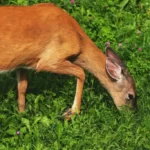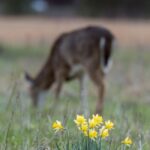Pumpkins, with their vibrant orange hue and association with fall festivities, have long captured the imagination of gardeners and enthusiasts. Yet, a lingering question often arises: are pumpkins perennial? This query stems from the impressive vines and abundant fruit production of pumpkin plants. In this article, we embark on a journey to uncover the truth about the life cycle of pumpkin plants. We will explore the distinction between perennial and annual plants and determine whether pumpkins fall into the category of perennials or if their story is one of annual renewal.
- VARIETIES – Baby Boo, Sugar Pie, Jack O Lantern, Jack Be Little, Giant Big Max Pumpkin Seeds for Planting.
- OUTDOOR GARDEN – Fun vegetable perfect for your outdoor garden. Seeds can be sown directly into the garden.
- TASTY AND PRETTY – There’s nothing more satisfying than growing your own giant pumpkin, or small baby boo pumpkins.
- SUMMER / FALL – Pumpkins are grown in the summer and enjoyed throughout the fall and winter months.
- USA – All of our non-GMO, heirloom pumpkin seeds for planting were grown, harvested and packaged in the USA.
Perennial vs. Annual Plants
To grasp the nature of pumpkin plants, it’s crucial to differentiate between perennial and annual plants:
Perennial Plants: Perennials are plants that persist and regrow for multiple seasons. They have a life cycle that extends beyond a single year, with the plant often entering periods of dormancy during harsh conditions and then re-emerging when conditions are favorable. Perennial plants can produce flowers and seeds for several years or even decades, with each individual plant living for an extended period.
Annual Plants: In contrast, annual plants have a relatively short life cycle, typically spanning just one growing season. They germinate from seeds, grow, flower, produce seeds, and then die within a single year. Annuals rely on seeds to complete their life cycle, and the next generation of plants grows from these seeds.
Understanding this fundamental difference between perennials and annuals is essential in unraveling the mystery of whether pumpkins are perennial or annual plants.
The Life Cycle of Pumpkin Plants
To determine whether pumpkins are perennial or annual, let’s examine the life cycle of pumpkin plants. Pumpkin plants, scientifically known as Cucurbita pepo, exhibit characteristics typical of annual plants. Here’s a breakdown of their life cycle:
- Germination: Pumpkin plants start their journey as seeds. When these seeds are planted in suitable soil, they germinate, sending forth shoots and roots.
- Growth: Pumpkin vines grow vigorously throughout the growing season, producing large, lobed leaves that help capture sunlight for photosynthesis. As the plant matures, it develops a sprawling habit, often extending several feet.
- Flowering: Pumpkin plants typically begin to flower once they reach a certain stage of growth. Male and female flowers appear on the same plant. Pollination, often aided by bees and other pollinators, is necessary for fruit development.
- Fruiting: After successful pollination, pumpkins start to form. The fruit grows and matures over several weeks, depending on the variety and environmental conditions.
- Harvest and Senescence: Once the pumpkins are fully ripe, they are ready for harvest. After harvest, the parent plant senesces and eventually dies. This marks the end of the pumpkin plant’s life cycle for that growing season.
Pumpkin Plants: Annual or Perennial?
Based on their life cycle, pumpkin plants are classified as annuals. They complete their entire life cycle, from germination to fruiting and eventual senescence, within a single growing season. While pumpkin vines can be impressively long and prolific, the individual plants themselves do not persist beyond this annual cycle.
This is why gardeners and farmers typically start fresh with new pumpkin plants each year. They sow pumpkin seeds in the spring, nurture the plants through the growing season, and harvest the pumpkins in the fall. The following year, the process begins anew.
While the parent pumpkin plant does not re-emerge in subsequent growing seasons, it’s worth noting that pumpkins can exhibit a degree of self-seeding. This means that the seeds from the previous year’s pumpkins may germinate and grow in the same location in the following year if conditions are suitable. However, even in these cases, the new plants are still considered annuals, as they complete their life cycle within a single year.
In conclusion, while the vines and fruit production of pumpkin plants can be impressively robust, their life cycle conforms to that of annual plants, making pumpkins decidedly annual rather than perennial.
Factors Influencing Pumpkin Plants’ Growth
The growth and success of pumpkin plants depend on various environmental and climatic factors. While they are annuals by nature, these factors can influence the extent and quality of their growth:
- Climate: Pumpkins thrive in warm climates with plenty of sunlight. Frost can be detrimental to their growth, so planting them after the last frost date in your region is essential.
- Soil Quality: Well-draining, nutrient-rich soil is crucial for pumpkin plants. Amending the soil with compost can improve its fertility.
- Water: Adequate and consistent watering is essential, especially during the flowering and fruiting stages. Pumpkin plants have high water requirements.
- Spacing: Providing enough space for pumpkin vines to spread is crucial. Crowded plants can lead to competition for resources and hinder growth.
- Pollination: Pumpkin plants rely on pollinators like bees to ensure successful fruiting. Encouraging pollinator activity in your garden is beneficial.
- 100% Natural & Organic Fertilizer Contains NO GMOs (Genetically Modified Organisms)
- Super Concentrated Slow Release – feeds plants and soil over time Treats up to 100 sq ft or 28 1-gallon plants up to 4 months.
- Improves Plant Growth Will not burn plants ( when used as directed )
- 6-2-3 Organic Fertilizer With 25% WOW Mycorrhizae plus Kelp & Humates For use in soil amending, transplanting, and established plants 100% Natural and Organic
- Contains Mycorrhizae for explosive root growth Contains WOW Mycorrhizae,At Least 85,000 Microbes Inside 2.2 lb Bag. Increases absorption of nutrients and water
Cultivation Tips for Pumpkin Lovers
For those enthusiastic about growing pumpkins, here are some cultivation tips:
- Plant Selection: Choose pumpkin varieties suited to your climate and space. Some varieties are more compact and suitable for smaller gardens, while others yield larger fruit.
- Sowing Time: Plant pumpkin seeds after the danger of frost has passed and the soil has warmed. This is typically in late spring.
- Spacing: Allow ample space between pumpkin plants, at least 2-3 feet apart, to accommodate their sprawling vines.
- Support: Consider using trellises or supports to keep pumpkin fruit off the ground, reducing the risk of rot and pests.
- Mulch: Apply mulch around the base of the plants to retain soil moisture and deter weeds.
- Pruning: Prune excess leaves and vines to improve airflow and sunlight penetration, which can help prevent disease and encourage fruit development.
- Pest Control: Be vigilant for common pumpkin pests like aphids and squash bugs, and implement pest control measures as needed.
Conclusion
In conclusion, the perennial or annual status of pumpkin plants has been a subject of curiosity for many, but their life cycle aligns with that of annual plants. While they are not perennials, pumpkins offer a rewarding and delightful experience for gardeners and pumpkin enthusiasts.
Understanding the factors that influence pumpkin growth and following cultivation tips can help you maximize your harvest and enjoy the vibrant colors and flavors of this iconic fall fruit. Whether you’re growing pumpkins for decoration, delicious pies, or family fun, embracing their annual nature can be a joyful and seasonal endeavor that adds a touch of autumnal magic to your garden.





